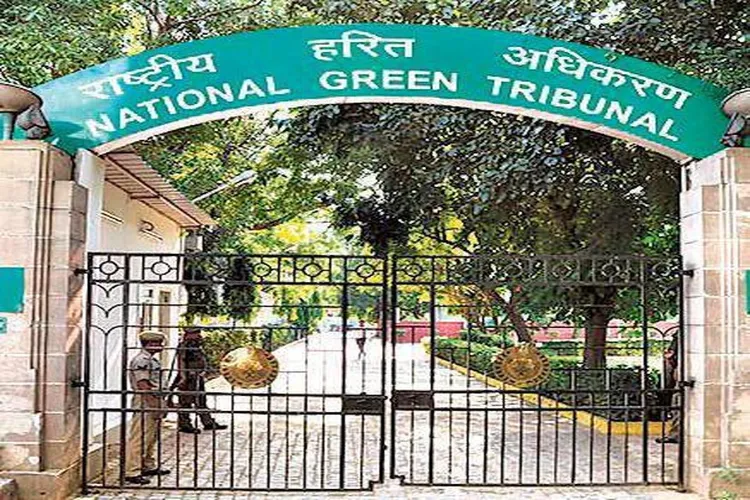New Delhi
The National Green Tribunal on Friday directed the Union Ministry of Environment, Forest and Climate Change (MoEF&CC) to formulate a comprehensive policy for phasing out asbestos roofs in educational institutions across the country within six months.
A bench comprising Justices Arun Kumar Tyagi (judicial member) and Afroz Ahmad (expert member), while delivering its verdict on a petition seeking a nationwide ban on the use of asbestos roofing in schools, said: “The tribunal cannot remain a silent spectator when the health of children is at stake.”
The bench noted that exposure to asbestos fibers, even in small quantities, poses significant risks to health and the environment and stressed that the precautionary principle as enunciated in Section 20 of the NGT Act, 2010 must guide government action.
“Children are a vulnerable group. Given the scientific uncertainty, the benefit of the doubt must benefit public health,” the tribunal noted.
The one from Dr. Raja Singh, visiting lecturer at the School of Planning and Architecture in New Delhi, sought to ban the use of asbestos cement roofs in schools. He argued that aging asbestos sheets become brittle and release microscopic fibers that can be inhaled, which over time can lead to lung disease and cancer.
The applicant relied on findings from the World Health Organization and scientific studies published in journals such as Nature Scientific Reports, which warned that “children and young people, regardless of their physical condition, should not use buildings containing asbestos”.
The MoEF&CC in its affidavit admitted that asbestos is a hazardous substance and exposure to airborne fibers can occur during weathering or demolition.
However, it has been alleged that India currently regulates the use of asbestos through various laws rather than banning it, including the Environment (Protection) Act, 1986, the Air (Prevention and Control of Pollution) Act, 1981 and the Factories Act, 1948.
The Ministry of Housing and Urban Affairs (MoHUA) stated that no asbestos-based materials will be used in CPWD or its related works as per Delhi Schedule of Rates 2021. In contrast, the Ministry of Education (MoE) reported that schools under its Samagra Shiksha program in Delhi do not use asbestos sheets.
The Fiber Cement Products Manufacturers Association (FCPMA), which represents the industry, claimed that asbestos cement sheets are safe because the fibers are “encased in the cement” and are not released during normal use. The association argued that a ban would affect livelihoods and that its members adhered to all safety norms, including BIS standards.
Rejecting the industry's maintainability objections, the court held that it had jurisdiction under Sections 14 and 15 of the NGT Act to resolve the issue as it was a significant environmental issue under the pollution laws.
The court noted that “there is no safe level of asbestos exposure,” citing scientific and judicial precedents including Narender Pratap Singh v. CPCB (2023) and Consumer Education and Research Center v. Union of India (1995).
“Although the use of asbestos is not yet banned in India, this does not justify its continued use in environments where children live,” the court said, adding that irreversible harm must be preceded by precautionary measures.
READ ALSO: The savior of Pahalgam, Nazakat Ali, gets a hero's welcome in the Chhattisgarh city
The NGT directed the MoEF&CC in consultation with the Central Pollution Control Board (CPCB) and the Education Ministry to prepare a time-bound plan to phase out asbestos roofing in all schools and replace it with safe alternatives. Establish standard operating procedures (SOPs) for the safe installation, dismantling and disposal of asbestos roofing and wall panels, conduct a nationwide survey to identify schools still using asbestos roofing, submit a status report within six months, and raise awareness among local authorities and educational institutions about the dangers of asbestos and safe substitutes.
